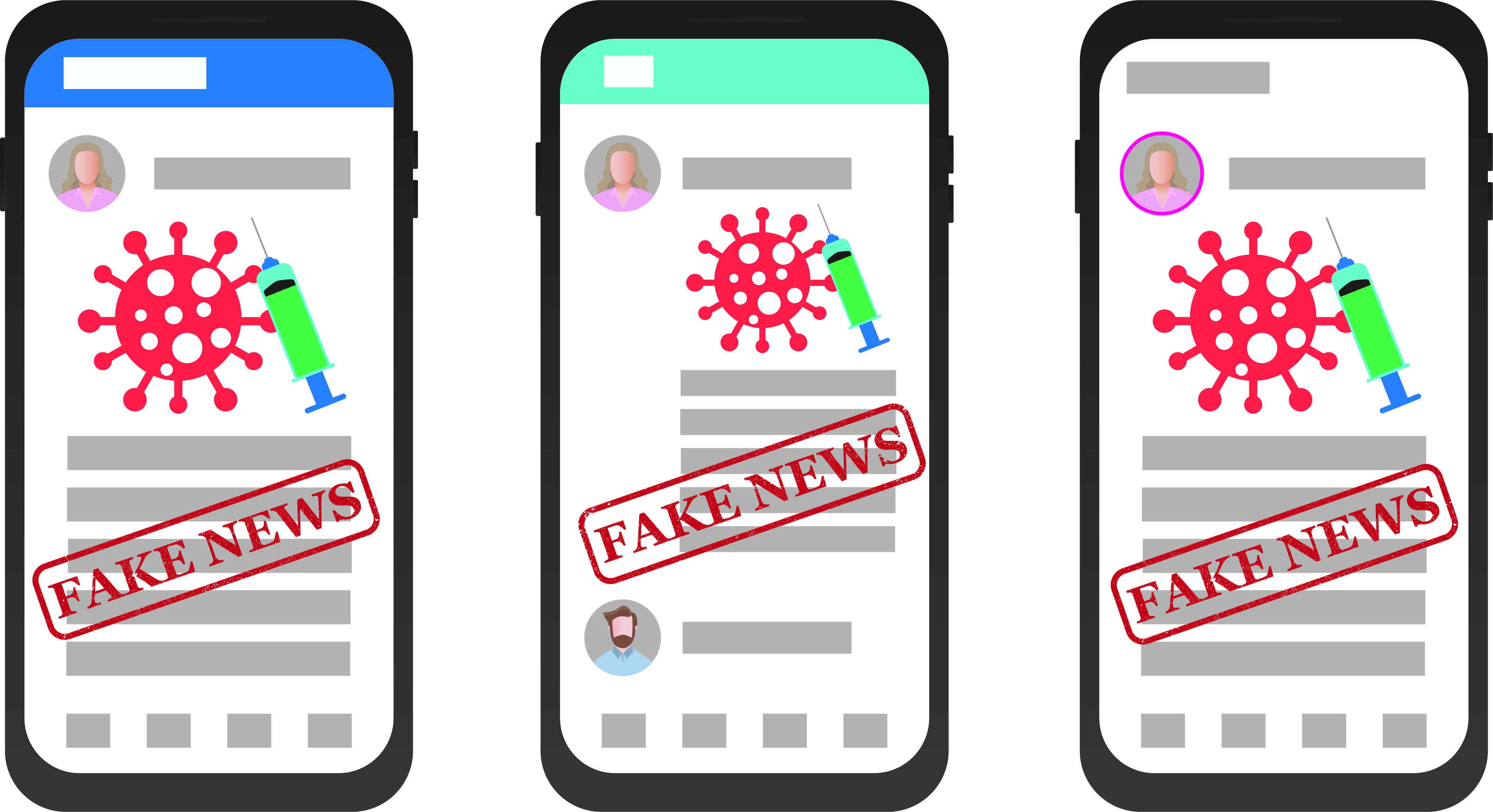Misinformation and Vaccine Hesitancy

COVID-19 vaccines became available in January 2021. At first, access was limited to healthcare workers, then the elderly, until it trickled down to younger populations. Despite the availability of the new vaccines, several obstacles have led to relatively low vaccination rates. Some barriers include limited access to the internet, safety concerns, misinformation, and politics, which are more prevalent among racial and ethnic minorities in comparison to Whites.
At the beginning of the vaccine rollout the only way to secure an appointment was through the phone or the internet. However, limited internet access and internet literacy were barriers for the elderly who, in many cases, are unfamiliar with navigating the internet. Many of these individuals had to rely on children, grandchildren, neighbors, or others to obtain a vaccine appointment through online means. These situations suggest the continued presence of the digital divide. It also shows how relying on newer technological advancements can result in healthcare barriers and access disparities.
Today, barriers are linked to safety concerns with the vaccine, misinformation, and political polarization. According to the “American COVID-19 Vaccine Poll” by the African American Research Collaborative, fielded from May 7 to June 7, 2021, 37% of Americans were hesitant to receive the vaccine as compared to 63% who were not hesitant. When disaggregating the data by race and ethnicity, 41% of Blacks were hesitant, followed by 40% of both Latinos and Native Americans, 37% of Whites, and 23% of Asians, who had the lowest hesitancy rates. These results suggest that Latinos, Blacks, and Native Americans have hesitancy rates slightly higher than Whites.
These hesitancy rates are linked to the following barriers: being too busy to get the vaccine, needing transportation, perceived cost of the vaccine, difficulty making appointments, not knowing how to get vaccinated, believing one needs health insurance to get the vaccine, thoughts of not being eligible for the vaccine, inability to use internet sign-up to schedule an appointment, thoughts that unemployed individuals cannot receive the vaccine, and the relative lack of vaccine information in other languages.
According to the poll, 55% of Latinos face barriers, 56% of Blacks, 57% of Asians, 49% of Native Americans, and 48% of Whites. As expected, racial and ethnic minorities were more likely to report barriers associated with obtaining the COVID-19 vaccine when compared to Whites. Adding to these barriers are pharmacy deserts which are places that lack pharmacies. These deserts are common in areas where Latinos and Blacks reside and continue to pose challenges for those wanting to get the vaccine. For the most part, problems with structural inequities in healthcare, beliefs about the safety of the vaccine, transportation issues, pharmacy deserts, having to take time off from work, and family obligations make getting vaccinated difficult.
Even when accounting for all other vaccination barriers, misinformation is becoming the most prevalent explanation for vaccine hesitancy. Among Latinos, survey results from Voto Latino in March 2021, suggest that as many as 27% of Latino respondents would not be taking the COVID-19 vaccine, while an additional 24% said they probably would not take the vaccine. These data also show that 37% of Latino respondents have been exposed to information stating that the vaccine is unsafe or ineffective. Approximately 49% of Latino respondents say Facebook was the source of COVID-19 information compared to 39% who indicated they rely on local news. About 49% of Latino respondents believe COVID-19 misinformation is a serious problem, followed by 29% of respondents who think it is somewhat a serious problem.
Further, 20% of Latinos mentioned directly receiving wrong or harmful information about the vaccine on Facebook and messaging apps. When examining this by primary language use, among English-speaking Latinos the most common news source was Facebook (59%), while among Spanish-speakers inaccurate information was received from messaging apps (66%). Thus, there are widespread issues with misinformation among the Latino community.
A recent report by the Washington Post shows a correlation between relying on coronavirus news from Facebook and having anti-vaccination views. As a result, many of the Facebook users from the survey were not likely to have gotten the vaccine. These results reflect the view of the general population and are not disaggregated by race and ethnicity. Still, they provide important insight into the influence of social media on vaccination hesitancy. This has detrimental effects on the public health of all populations which may worsen as a fourth wave of the coronavirus pandemic continues to unfold.
In short, there are several barriers that must be overcome to get the unvaccinated population vaccinated. Needed is precise information on where to get the vaccine, how taking time off work to get vaccinated is possible, where to get access to child and family care, and social media regulation on inaccurate information. Further, effective messaging is needed to convince the unvaccinated to get vaccinated. According to the African American Research Collaborative poll, emphases on protecting the lives of loved ones, making it safe for the economy to open, protecting the lives of children, and making it safe for family occasions are the most effective messages. Messaging, however, must be in several languages. By doing these things there can be a better acceptance of the vaccine and more people getting vaccinated.
